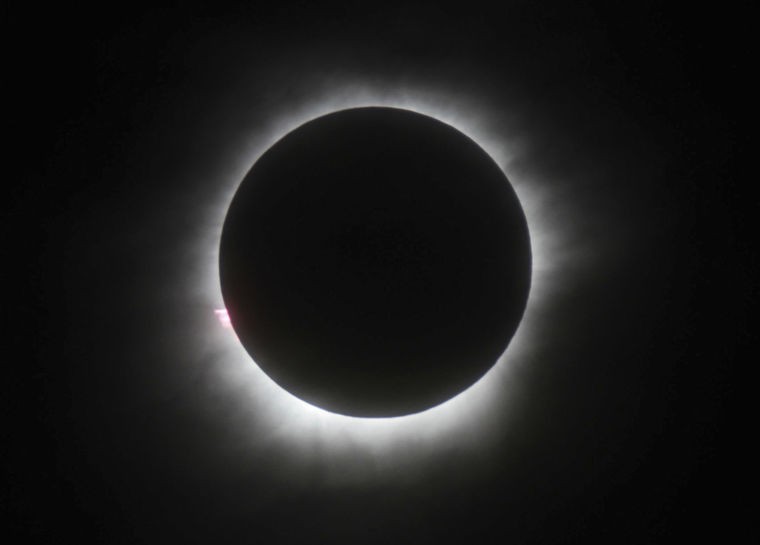A total solar eclipse. It’s a celestial event that always mesmerizes and captivates onlookers, and East Idaho is one of the best places on the planet to see the next one.
On Aug. 21, 2017, the moon will be positioned directly between the Earth and the sun, casting a shadow on the Earth’s surface about 100 miles wide. At approximately 11:30 a.m., East Idahoans will be able to observe the eclipse with their own eyes.
The moon’s shadow will sweep across the country from west to east, making landfall on the Oregon coast at 11:15 a.m. MST before reaching Idaho at about 11:27 a.m. Just after 11:30 a.m. is when the eclipse is scheduled to move over East Idaho, with the centerline passing between Rexburg and Rigby and just south of Driggs.
The eclipse will continue into Wyoming, where the centerline will pass over Grand Teton National Park — just north of Jackson — at about 11:36 a.m. The eclipse will continue its path through Wyoming, Nebraska, Missouri, Illinois, Kentucky, Tennessee and South Carolina before leaving the continental United States at approximately 12:48 p.m. MST.
After traversing the U.S. in a little over an hour and a half, the eclipse will continue over the Atlantic Ocean before ending at sunset near Africa. The moon’s shadow doesn’t touch any landmass before or after the United States, keeping its path on land exclusively within the U.S. It’s the first total eclipse in the nation since 1991, the first on the U.S. mainland since 1979 and the first to sweep the entire length of the country since 1918.
“It’s just really cool,” said Steve Shropshire, a professor of physics at Idaho State University. “It’s an opportunity to see parts of the corona (or aura of plasma that surrounds the sun) that you can’t see from the Earth because it’s washed out from the light of the sun.”
Connoisseurs of the cosmos are already making plans for the sublime solar spectacle. Those in Oregon eager to see the eclipse have already booked all of the state’s available campsites, according to the Associated Press. The same can be said for hotel rooms in Casper, Wyoming.
Shropshire says ISU will host a solar eclipse viewing event open to the public on the university’s campus in Idaho Falls. The event is in its preliminary stages, however, and Shropshire isn’t sure about specific details.
Shropshire also said a proposal has been sent to NASA to fund a joint experiment between ISU students and students from Montana State University in Bozeman, Montana. The experiment will be designed to accurately measure the sun’s radius.
“These are not common events,” Shropshire said. “Usually, an eclipse happens somewhere within a couple hundred miles (of you) sometime in your lifetime. The fact it’s passing over here just north of us in Idaho Falls is pretty incredible.”



